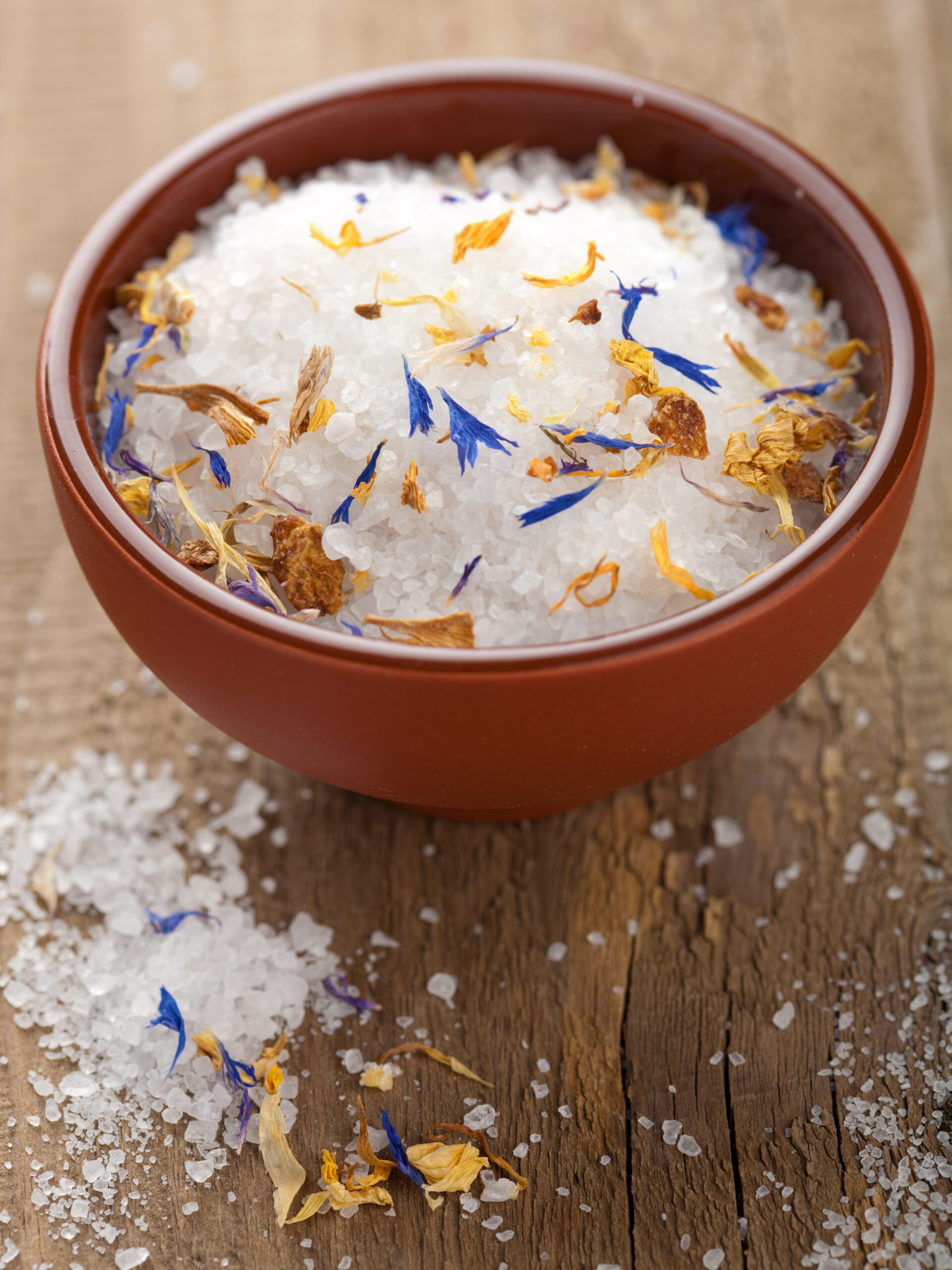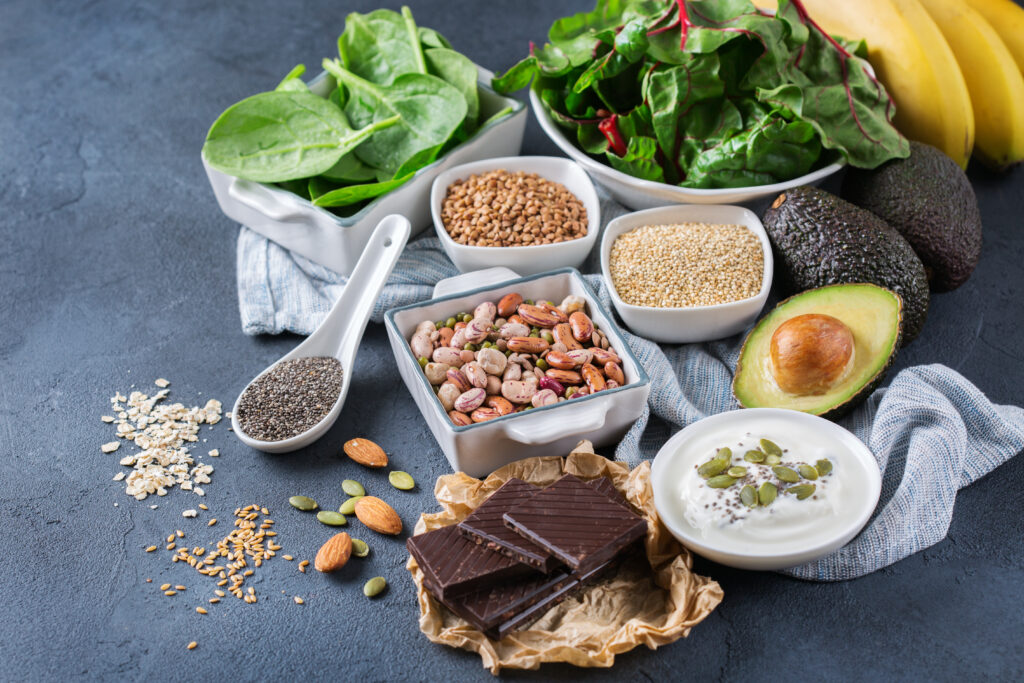Magnesium support for the relief of Endometriosis, Adenomyosis & pelvic pain.
Magnesium has had a resurgence of late in the health & well being sector – and it’s no surprise!
The mineral was discovered in 1755 by a man named Joseph Black. The name “Magnesium” was derived from Magnesia which is a district of Eastern Thessaly in Greece. However, some sources tell us that is was earlier discovered in 1618 by a farmer in a small town of Epsom in England. It is said that his cows refused to drink the water from the well on his property because it had a bitter taste. But fortuitously, the farmer noticed that the water had healing properties for scratches and rashes. Word spread and this substance, hydrated Magnesium Sulphate (or Sulfate), was famed by the name Epsom Salts.

This blog post is for general informational purposes only and should not be taken as medical advice. Always consult with your healthcare provider before starting any new treatment.
What we do now know is that this natural wonder mineral can offer so many more benefits to the whole body. In short, Magnesium can have an impact on your muscles, immune system, nerves, hormones, digestion and energy production. It really has a holistic response to the body, much like the approach we need to take when managing the symptoms of Endometriosis, Adenomyosis & pelvic pain. When it comes to the effect on muscles, Magnesium has a big impact on muscle contraction and relaxation, which can prevent cramps and spasms, especially beneficial for those experiencing pelvic pain.
Magnesium can be taken in many forms; supplements, liquids, foods, oils and even by taking a relaxing bath!
I’m a firm believer of balance, I believe when we tip the scales one way or another that we can miss out on potential benefits. I’ll always reference back to a holistic approach to symptom management, which includes natural options through to medicinal & manufactured options (where possible) because the more we can support our bodies, the better we can feel.
So how can we incorporate Magnesium in our life to help alleviate symptoms of Endometriosis, Adenomyosis & pelvic pain? There really are many ways!
Food sources. Magnesium absorption through food is one of my preferred ways to keep me going. It’s way more fun to me, eating for joy and for the mineral benefits, yes please!
Magnesium Oil is a concentrated form of Magnesium Chloride. What’s great about it is that it is absorbed quickly through the skin. Applying Magnesium Oil topically, via a spray or an oil, can help reduce muscle cramps and soothe the nervous system. Thus, resulting in a better night sleep to give our bodies the best chance for rest and recovery. Simply, apply Magnesium Oil to the affected areas and let it soak in.

Magnesium Sulphate, AKA Epsom Salts, can reduce inflammation and promote relaxation. The Magnesium content in Epsom Salts can also help regulate cortisol levels which is a stress hormone that often exacerbates the symptoms of Endometriosis and Adenomyosis. So, during a flare it can be a beneficial to soak in 2 + cups of Epsom Salts in a warm bath for a lovely way to calm the body for a better night’s rest. If you don’t have a bath, simply use a bucket and soak your feet in 1 cup of Epsom Salts, it still has a great effect on the body. It’s recommended to bathe/ or soak for around 30 minutes or more to get the full absorption of the Epsom Salts.
Magnesium supplements are a great addition to the kit, helping to top us up when we can’t get it from other sources. You can opt for capsules or powders, some can be taken in the morning and others at night, so there are many options are out their to suit your lifestyle. Taking Magnesium supplement at night can also help us have a more restful sleep.
So, back to food options containing Magnesium:
- Leafy Greens & Green Vegetables: Spinach, kale, broccoli, peas are rich in Magnesium. l like to sneak frozen chopped spinach into as many dishes as possible – it’s great in pasta sauce, taco mince, chicken pie filling, really the list is endless.
- Nuts and Seeds: Almonds, cashews and Brazil nuts, as well as pumpkin seeks, flaxseed, and chia seeds are excellent sources of Magnesium. If you’re not a fan of eating nuts, like me, you can always use alternative nut butters in place of peanut butter on toast, crackers, rice cakes veggies for an afternoon snack. Or those nut bars that are bound together by only honey – I could easily sneak a couple of those sweet treats in each day.
- Beans and Legumes: Legumes, including black beans, kidney beans, chickpeas, and lentils, are packed with Magnesium. Again, sneak these in where possible, you don’t need to eat a raw bean salad every day! I find they go well with any Mexican meal or a a small scoop topping a salad. Baked beans on toast with an egg is a favourite weekend breakky at home.
- Whole Grains: Whole grains like brown rice, quinoa, and buckwheat are other great sources of Magnesium. I JUST LOVE RICE> Just like pasta, I could eat it for every meal, but don’t, because, well balance. One of my favourite Peruvian dishes is a light quinoa chicken soup. You can easily can add those leafy greens and even some lentils to bulk it up even more. A great form of buckwheat is in pasta form, so good for the gut and body. It’s filling, but not as heavy as traditional pasta.

- Dark Chocolate: The good thing about dark chocolate, it often gets a good wrap that it is good for you! But you need to make sure it’s not one that contains the first ingredient of ‘sugar’. Look out for a minimum cocoa content of 70% to get the health benefits. Dark chocolate pairs so well in a bath with a glass of red wine. Full stop.
- Avocado: Avocados contains healthy fats and provides Magnesium and fibre. My go-to weekday breakfast is hot-smoked salmon on toast with avocado and chilli oil (preferably by sister-in-law to be’s home made chilli oil, so good. Actually I need to ask her to make another batch already).
- Bananas: Bananas aren’t just a source of potassium (which is what we usually hear about them) but they also contain a good amount of Magnesium. I most often have a banana before I exercise or play netball – I find it helps with energy for the game and post match cramping.
- Fatty Fish: Fish like salmon and mackerel are rich in omega-3 fatty acids, again which is usually what we hear about this food, but they are also a great source of Magnesium and support heart health and cognitive function. Aside from salmon with avo for breakfast, sometimes I simply cook up some pasta for lunch and tip in a tin of sardines in tomato sauce, some pepper, chilli and off we go. Mum doesn’t really enjoy the smell in the kitchen after that one, but my body appreciates it. Also a favourite snack is smoked oysters on crackers – a treat my nanna would often have, but as a child it was just one cracker. How good is it being an adult and being able to eat the whole tin- all by yourself?!
So that’s just a few ideas for you, hey!

Here’s how I incorporate Magnesium to alleviate symptoms. I have been taking Magnesium supplements at night for as long as I can remember. Food! When you get to know me, you’ll find a lot of reference to foods to help nourish my body. I love to use Magnesium Oil, sprayed on my lower belly or feet. And I am learning to love a bath with Epsom Salts. It’s nothing about the Epsom Salts, they’re fab! But I do get bored in a bath, so this routine now looks like an episode or two of my current series or even a movie, a red wine and some dark chocolate – sounds pretty indulgent doesn’t it – but actually not – it is a simple way to care and nurture our bodies.
But as always, remember to consult your General Practitioner or Gynaecologist for advice on how to incorporate Magnesium into your daily routine to gain the best benefits.
Feel free to share your ideas below. Happy Magnesium exploration!
Take care,
Claire x
